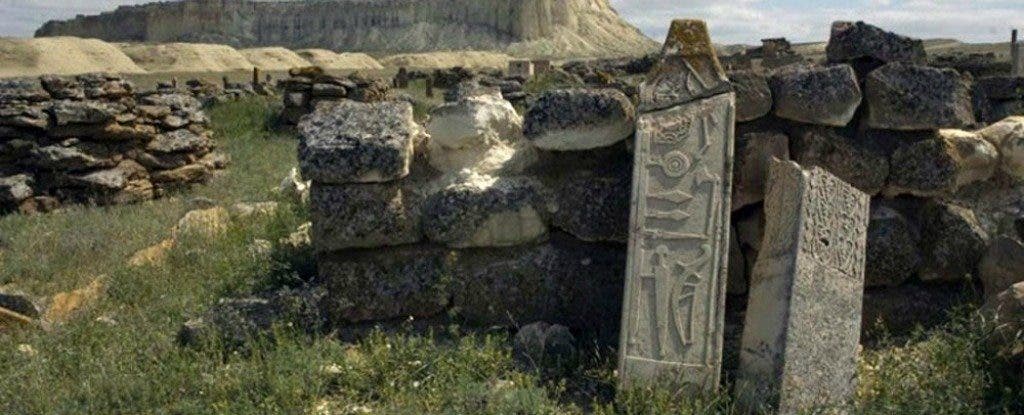Archaeologists have discovered a gigantic, 1,500-year-old stone monument in Kazakhstan. Reminiscent of Stonehenge, the structure covers an area of 300 acres (120 hectares) and might have been created by the Huns.
Researchers from the Mangistaus State Historical and Cultural Reserve in Kazakhstan and the Russian Academy of Sciences were stunned when they realized what they had found.
“When the area was examined in detail, several types of stone structures were identified,” archaeologists Andrey Astafiev, of the Mangistaus State Historical and Cultural Reserve; and Evgeniï Bogdanov, of the Russian Academy of Sciences Siberian Department’s Institute of Archaeology and Ethnography, wrote in the journal article.
The rocks weren’t all the same size and shape. The smallest stone structures are only 13 feet by 13 feet (4 by 4 meters), and the biggest are 112 feet by 79 feet (34 by 24 m). The structures are “made of stone slabs inserted vertically into the ground,” he added, and some even feature carvings of weapons and creatures etched into them. Researchers still aren’t sure what to make of them yet, being understaffed and severely underfunded.
Treasure hunters and lack of funds
Archaeologists first learned about the site in 2010, when a man with a metal detector noticed something strange – as it so often happens in many parts of the world. What he found were scattered pieces of a silver saddle near a massive slab of stone.
“The relief decoration was impressed on the front surface,” the team writes of the saddle, which they think could lead to more clues about who owned it, 1,500 years ago. “[S]lver plates would have been laid over the shapes and fixed in place.”
They thought it was just a small, local monument, a tomb of some local leader. However, they lacked the funds and the support to conduct proper studies.
“Unfortunately, the socioeconomic situation in the region is not one in which it is easy to engage in archaeological research, and it was not until 2014 that the authors of this article were able to excavate certain features within the site,” the team writes.
So it took them four years to gather the funds to do a big dig, and they were surprised to learn that the monument spans over a huge surface, much more than they initially thought. But the question still remained: who built it?
By all accounts, it seems like it was a nomadic tribe, around the time that the Roman Empire was falling. The likely civilization is the Huns. The Huns plundered around Asia and Eastern Europe for more than six centuries, between the 1st century AD and the 7th century AD, but also left behind impressive monuments. However, more often than building, the Huns fought and stole, so there’s also the chance that someone else built the monument and the Huns just occupied or modified it. Some skeletons have been found nearby and they might shed some light on the structure, but they haven’t been dated – you’ve guessed it – because of lack of funds. So at this moment, we don’t know if this is a cemetery or a mausoleum or something completely different. It may be barren or full of treasure, an empty structure or a historic trove.
Unfortunately, that’s the case not only in Kazakhstan, but in many other parts of the world. It takes money and time to conduct archaeological research, and many governments and local leaders are not interested in such enterprises when there’s little to gain in pragmatical, economic terms. Hopefully, we’ll be learning more about this particular monument in the near future.
The team’s work was published in Ancient Civilisations from Scythia to Siberia.










